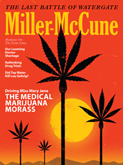The recession may have robbed city governments of the wherewithal to enhance public places. But some undaunted architects, planners, and community activists are trying urban design experiments that are deliberately cheap, temporary, and unofficial. And sometimes these modest but audacious interventions lead to altered municipal policies and lasting changes in the cityscape.
Take an effort called the Better Block, which launched with an unofficial event in Dallas in April 2010. For one weekend, community activists anted up just under $1,000 and used mostly borrowed materials and their own labor to transform a pedestrian-unfriendly city block in their Oak Cliff neighborhood into what urban designers call a “complete street” — one that doesn’t just serve cars. Working into darkness that Friday night, they painted a bike lane and arranged potted saplings — lent to them by a landscape company — and outdoor furniture to narrow the street’s three traffic lanes to one. A cafe, a flower market, and a children’s art studio briefly moved into some vacant storefronts donated by landlords. Musicians entertained and people hung out.
[youtube]hdZpJ5MwbqA[/youtube]
And the effort is going viral; Better Block has held events in more than a dozen cities including, in 2011, Cleveland, Tulsa, and Philadelphia.
Those who undertake such up-from-the-sidewalks initiatives call them by various names: tactical urbanism, pop-up urbanism, urban acupuncture — or in one blogger’s ornate locution, “Provisional, Opportunistic, Ubiquitous, and Odd Tactics in Guerrilla and DIY Practice and Urbanism.” The events can be as short-lived and mobile as the organizing of local food trucks to meet at a certain spot where lunch options are scarce, or the annual Parking Day, when activists in scores of cities, armed with as little as AstroTurf, lawn chairs, and quarters for feeding the meter, turn an on-street parking space into a park for a few hours. Other projects, like placing low-tech swimming pools in areas where recreation options are lacking, may last for a season. The New York-based design firm Macro Sea has done this with Dumpsters that were custom-ordered and modified by their manufacturer for this very use.
The Jan-Feb 2012
Miller-McCune
This article appears in our Jan-Feb 2012 issue under the title “Pop-Up Parks” To see a schedule of when more articles from this issue will appear on Miller-McCune.com, please visit the
Jan-Feb 2012 magazine page.

“The experimental approach is local and low risk, with low expectations,” says Mike Lydon, a planner and principal of the urban-design firm Street Plans Collaborative. “You can try things out at a small scale and see what works.”
Lydon wrote a downloadable catalog-cum-manual called “Tactical Urbanism: Short Term Action/Long Term Change” with other activists including Aurash Khawarzad, a planner who founded a group called DoTank:Brooklyn. DoTank events have ranged from holding a potluck community party under an elevated expressway to “chair bombing” — crafting Adirondack-style chairs from shipping pallets and depositing them unbidden outside laundromats and other places where people have to spend stretches of time.
People like Lydon and Khawarzad, trained in architecture and planning, would argue that some examples of pop-up urban reinvention are more effective than others. The point of the potluck was to demonstrate that the space under the highway could be put to uses more valuable than parking. Chair bombing highlights the absence of amenities in spots where people are obliged to spend time; in some cases, property owners have since added seats of their own.
“I love public art,” says Khawarzad, “but public art in the context of urbanism has more impact and can leave a legacy.”
Small private spaces such as shops, offices, and restaurants add an irresistible quality that helps make a public space worth lingering in. Jason Roberts, cofounder of Better Block explains, “The edges are what make the public spaces great, and the edges are private spaces. In persuading landlords to donate use of empty storefronts during the events, the activists tell them, ‘You can use it as your open house; we’re going to re-create the area for you.’ In most every project, we’ve seen businesses, within six months, come into the area that were not there before.”
In Dallas, changes occurred because of the pop-up projects, says Peer Chacko, the city’s assistant director of development services. “They have raised awareness,” he says, so that designs of several existing roadway projects in other areas have been altered to be more accommodating to pedestrians and cyclists. Roberts and his cofounder Andrew Howard have formed a consulting firm to work with the city. Better Block gets residents involved who might not have the patience to attend public meetings, Chacko says, adding, “It harnesses some of that energy in a positive way.” And the city is adapting the tactic to test planning alternatives. If proposed changes are put in place experimentally for two weeks, Chacko says, “people can say, ‘Oh, that’s what it’s really like.’”
Late last year, Better Block activists in Forth Worth targeted South Main Street, which had long been designated a fast-moving state highway. Without permission and on a $500 budget, they painted bike lanes and a crosswalk, reduced traffic lanes from four to two, and brought in food trucks and art displays. They scheduled the event to coincide with an art festival that would ensure crowds.
“It was inexpensive and fast,” says Fort Worth’s deputy planning director Dana Burghdoff. And it mobilized public support for the city’s ultimately successful effort to convince the state to reroute the highway. Two traffic lanes have been given over to on-street parking and bicycles, and plans are in the works for wider sidewalks, street trees, new lighting and benches, and intersection bulb-outs. South Main is once again just a city street.
In these fiscally straitened times, cities may well come to rely on citizens who crave the intimacy and street culture of urban living strongly enough to create its amenities themselves.
Sign up for the free Miller-McCune.com e-newsletter.
“Like” Miller-McCune on Facebook.
Follow Miller-McCune on Twitter.
Add Miller-McCune.com news to your site.




